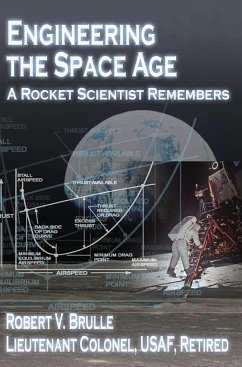
The Landmark Space-Age Thucydides
Versandkostenfrei!
Versandfertig in über 4 Wochen
29,99 €
inkl. MwSt.
Weitere Ausgaben:

PAYBACK Punkte
15 °P sammeln!
Laymen and space enthusiasts alike continuously ask, "Why send people to space?" The popular philosophic answer to this question is, "Because the human race is inspired by other humans exploring the unknown." While this may be true, by itself it rings cavernously hollow in the face of tough budgetary and political realities. From a state perspective, something of greater beneficial substance must be at play in order to justify the high costs and risks associated with human spaceflight. Extensive studies exist to demonstrate the strategic significance of uninhabited spaceflight technologies, su...
Laymen and space enthusiasts alike continuously ask, "Why send people to space?" The popular philosophic answer to this question is, "Because the human race is inspired by other humans exploring the unknown." While this may be true, by itself it rings cavernously hollow in the face of tough budgetary and political realities. From a state perspective, something of greater beneficial substance must be at play in order to justify the high costs and risks associated with human spaceflight. Extensive studies exist to demonstrate the strategic significance of uninhabited spaceflight technologies, such as the Global Positioning System, or communications and surveillance satellites. However, a dearth of equivalent research exists for human spaceflight. As a result, society too often caricatures human spaceflight as an expensive state luxury with little public importance. In reality, the saga of space history is testament to human spaceflight's use by states as a powerful grand strategic tool of hi-tech statecraft. This work has been selected by scholars as being culturally important, and is part of the knowledge base of civilization as we know it. This work was reproduced from the original artifact, and remains as true to the original work as possible. Therefore, you will see the original copyright references, library stamps (as most of these works have been housed in our most important libraries around the world), and other notations in the work. This work is in the public domain in the United States of America, and possibly other nations. Within the United States, you may freely copy and distribute this work, as no entity (individual or corporate) has a copyright on the body of the work. As a reproduction of a historical artifact, this work may contain missing or blurred pages, poor pictures, errant marks, etc. Scholars believe, and we concur, that this work is important enough to be preserved, reproduced, and made generally available to the public. We appreciate your support of the preservation process, and thank you for being an important part of keeping this knowledge alive and relevant.












